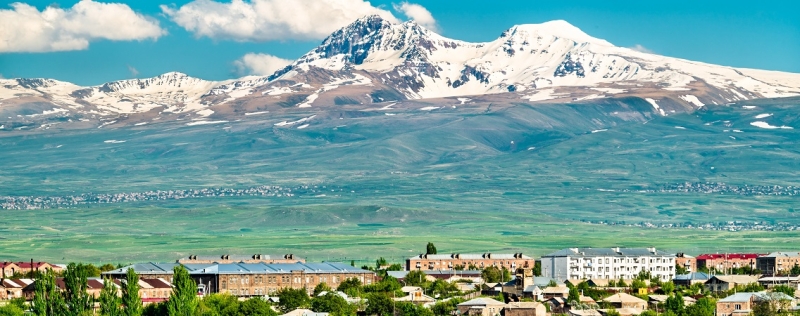
In Armenia, in search of ancient architecture, it is customary to go to monasteries lost among the mountains. But there is an entire city that has preserved its pre-revolutionary appearance and can surprise tourists with its color and originality. Gyumri is the second largest settlement in the Transcaucasian country, a city of artisans and humor. Here you can walk along the narrow streets paved with paving stones, admire the houses made of black tuff, admire the view of Aragats and try kyalla – a dish that is prepared only here.
Entry rules
There are no COVID restrictions in Armenia now. Russians can enter the country without a visa; they will need a foreign or internal passport. The maximum stay is 180 days.
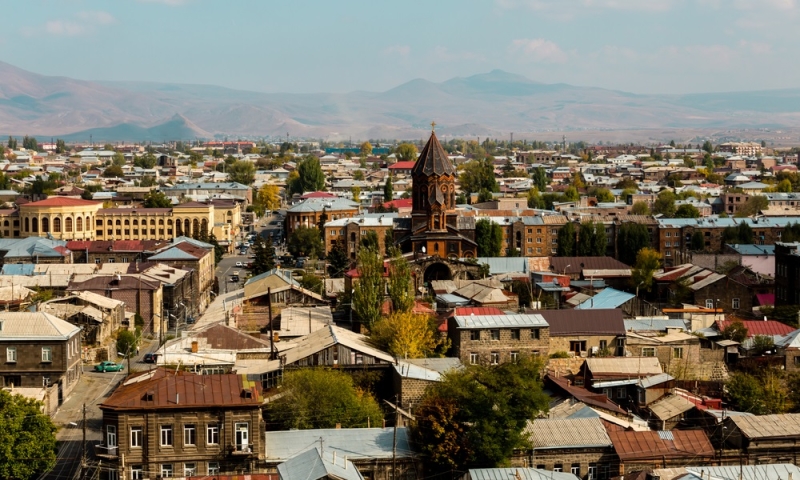
How to get there
There are direct flights from Moscow to Gyumri, ticket prices start from 7,800 rubles*.
You can also fly to Yerevan and get to Gyumri by train. The cost of travel on a regular train is 275 rubles*, the trip will take about three hours with all stops. There are also express trains to the city, travel time is two hours, cost is 530 rubles*. An ordinary taxi will cost a tourist an average of 3,800 rubles*.
The most convenient way to get from Yerevan to Gyumri is to book a car. You will spend almost two hours on the way.
Where to stay
H.A.S.K (score 9.1). The cost of one night for two is 2,600 rubles*
Olympic Hotel (rating 8.9). The cost of one night for two is 3,900 rubles*
Villa Kars (score 9). The cost of one night for two is 8,600 rubles*
What to see
Airport and train station
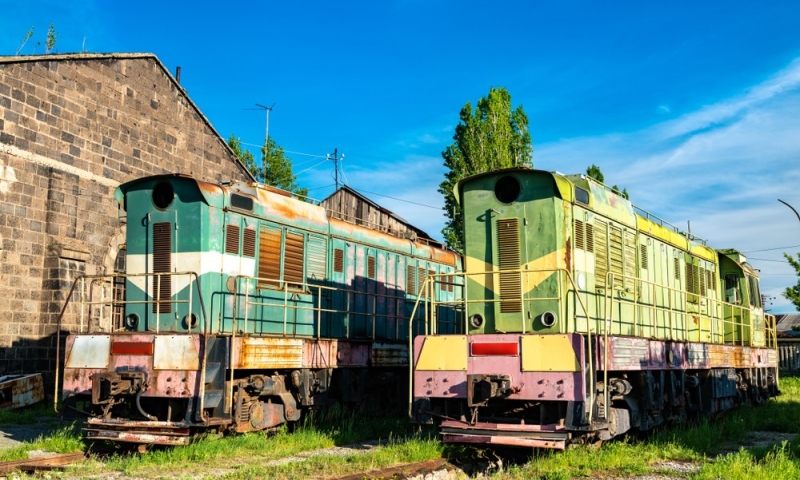
You can start exploring Gyumri from the airport and train station. These beautiful monuments of modernism were inherited by the city from Soviet times.
If you like the old terminal of Yerevan’s Zvartnots, then the unusual shapes and interiors of Leninakan Airport – that’s what the city was called during the Soviet period – will also please you. The building is small, so it will take a few minutes to explore.
The same can be said about the station, but it is advisable to stay here to study the interesting bas-reliefs and the history of the South Caucasus Railway. The clock tower and the main hall deserve special attention.
Vardanants Square
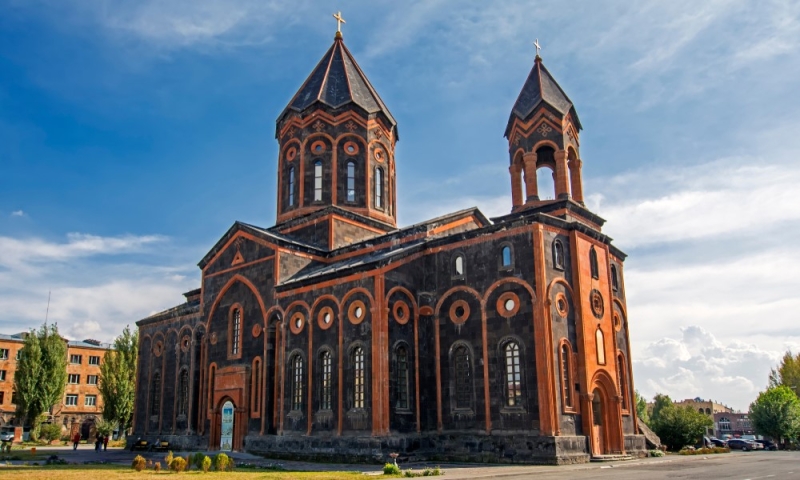
It’s better to start getting acquainted with most cities from the main square; Gyumri is no exception. There are two churches here – the Church of Christ the All-Savior and the Church of the Holy Mother of God. The first was destroyed during the 1988 earthquake, restored in 2014, and work on its interiors has recently been completed. Nearby there is a monument to the victims of those tragic events. The second temple survived the earthquake. Nowadays many city events take place there.
Since Gyumri is historically considered the capital of Armenian humor, you can find a wall of jokes on the main square of the city. And also a monument to Vardan Mamikonyan and his associate, the commander who defended the Christian faith on the territory of Armenia during the war with the Persians. The city hall and the beautiful Oktyabr cinema building are also located here.
Old quarters of the city
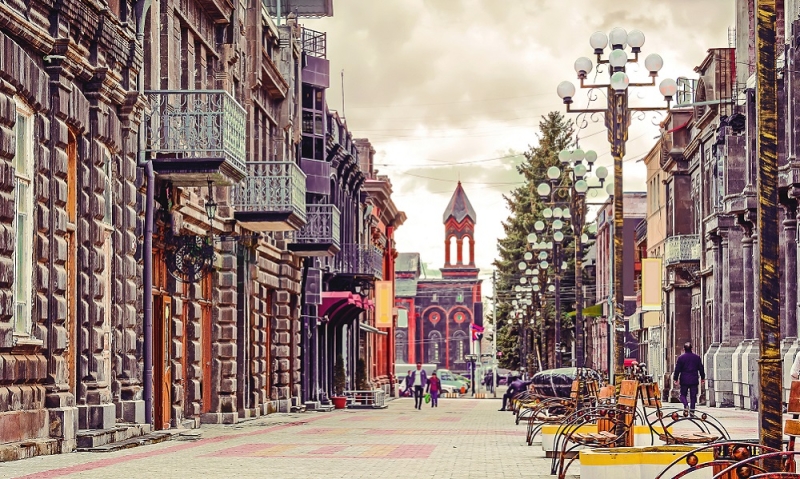
The historical center in Gyumri is better preserved than in Yerevan. And if pink and orange tuff has become familiar in the capital, then this city can surprise with its Gothic gloom and severity. In Yerevan, buildings made of black tuff are not so common; in Gyumri there are many more of them. And its combination with red tuff will leave few people indifferent. The city center was mainly built up in the second half of the 19th century. There are many architectural styles here, from classicism to art nouveau. The most beautiful buildings are located on Ryzhkova, Shiraz, Rustaveli, Jivani and Varpetats streets. Many of them were renovated and paved with paving stones several years ago, and now they look neat and cozy. It’s worth looking into the alleys, where you can also see architectural masterpieces in the colorful courtyards.
Black Fortress
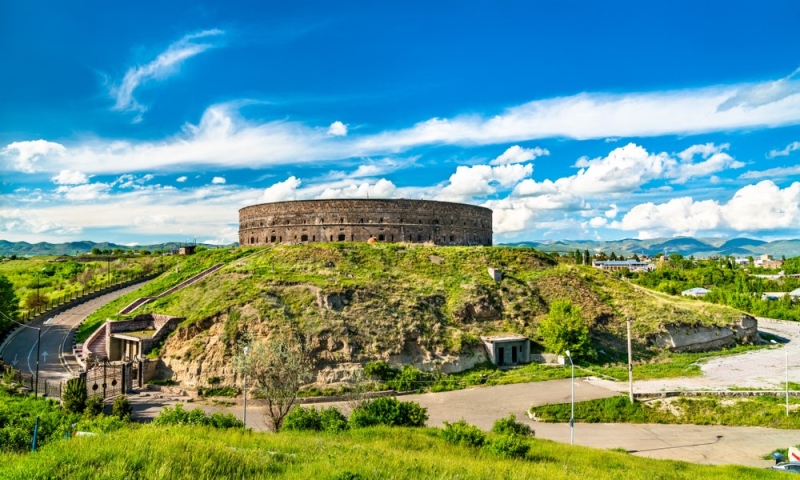
The fate of Alexandrapol – as Gyumri was called within the Russian Empire – is closely connected with the large fortress built at the beginning of the 19th century to protect against the Ottoman Empire. It is located on a high hill to the west of the city, and its main part is inaccessible to visitors. But the southern tower of the fort is open to tourists, and it is customary to call it the Black Fortress. The structure, also built of dark tuff, has almost completely retained its historical appearance, except that a stylish concert venue has appeared inside. From the hill there are beautiful views of the city and the double-headed peak of Aragats. The easiest way to get to this place is by taxi, but if you want to take a walk, you can walk from the city center to the fortress in 20 minutes.
Mother Armenia
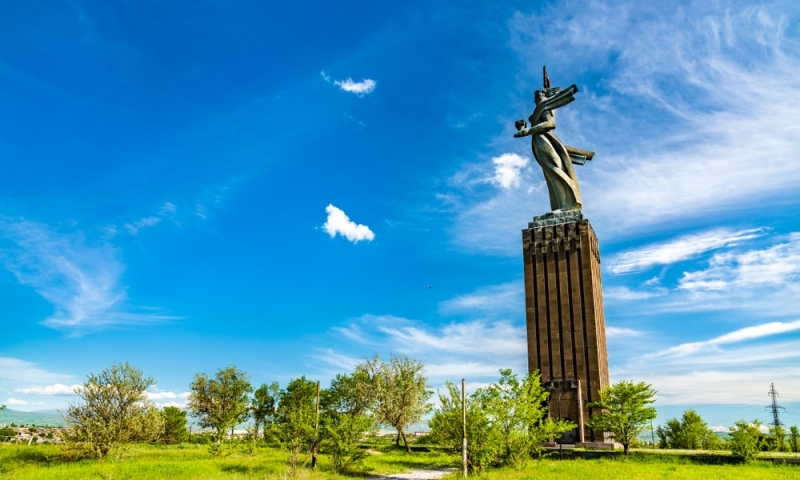
Gyumri has its own similar monument, and it towers over the city just like Mother Armenia in Yerevan. Only here he looks more feminine and peaceful. However, according to local legend, the back side of the structure, facing Turkey, resembles a terrible dragon. Whether this is true or not, you can see for yourself. Initially, this particular monument was supposed to be installed in Yerevan, but the country’s leadership considered that a monument with a more militant appearance was more suitable for the capital. Gyumri Mother Armenia is located next to the Black Fortress, so visiting the two attractions is easy to combine. It is also worth walking along Victory Alley, leading from the base of the hill to the monument.
Iron Fountain
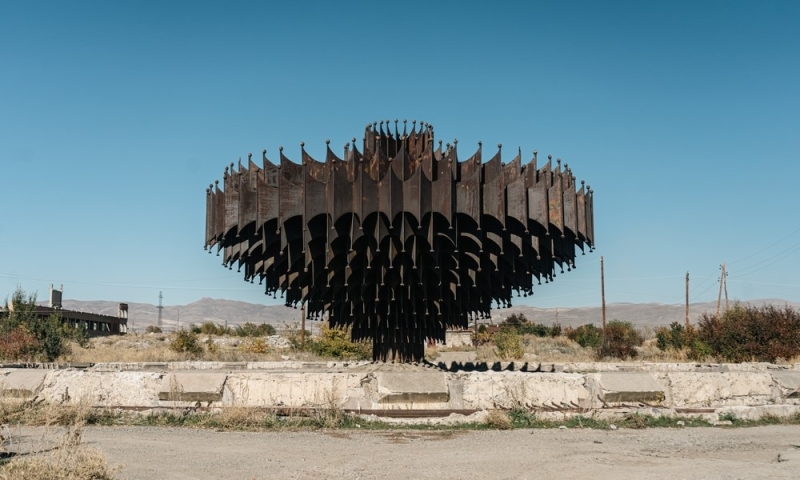
The 1988 earthquake is a tragedy, traces of which can still be found throughout the city. The northern areas of Gyumri, built during Soviet times, suffered the most. In one of them, in 1982, the Iron Fountain was installed – another example of Soviet modernism. Its author, architect Arthur Tarkhanyan, is better known for his other buildings: the Tsitsernakaberd memorial and Zvartnots airport in Yerevan. The fountain functioned properly for six years, but after the earthquake, ruins and desolation remained around it. Only the building survived. Tourists compare its unusual shape to a flying saucer, and city officials talk about plans to restore the area. In the meantime, the destructive scale of the tragedy is clearly felt here, and the fountain is perceived as a symbol of the resilience of the city and its inhabitants.
Museum of National Architecture and Life
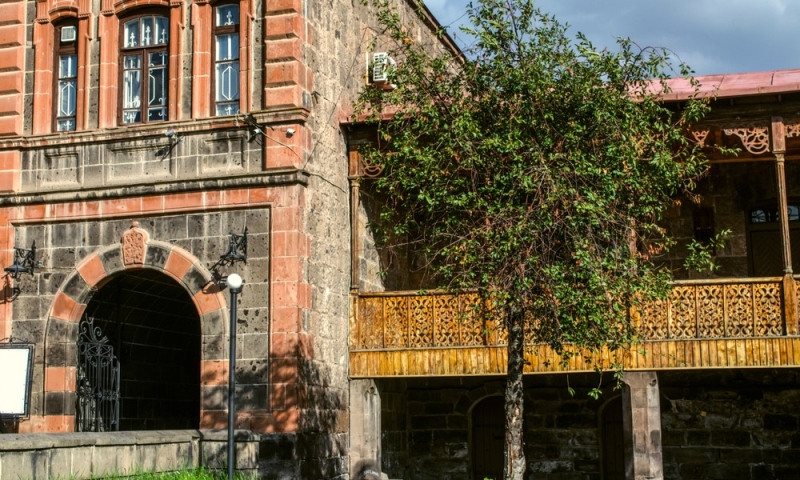
The presence of such a museum in Gyumri is not accidental: after all, this city better than others demonstrates the achievements of Armenian architecture, and the residents maintain some traditions of the pre-Soviet period. The museum is located in the former merchant mansion of the Dzitokhtsyan family – a beautiful building made of black and red tuff. It was built in the 19th century, and one of the main merits of the owners of the institution is the preservation of authentic interiors. The exhibition, in chronological order and in an accessible form, tells about the history of the city, the origin and development of many crafts in it, the appearance of numerous mansions and churches, national costumes and household items. The entrance ticket costs 1000 drams (approximately 212 rubles).
Opening hours: Tuesday – Saturday from 11:00 to 17:00, Sunday from 11:00 to 16:00
Gallery of the Aslamazyan sisters
Mariam and Yeranui Aslamazyan are Armenian artists who became famous in the Soviet Union and far beyond its borders thanks to their talent and struggle for gender equality in art. The sisters were often sent to international exhibitions to represent the USSR. Their works are inspired by people and images from different parts of the world, while preserving the best national traditions in painting. In 1987, the artists founded a gallery in their native Gyumri and donated more than 600 original works to it. It is located in an old building, which also deserves attention. Entry cost 212 rubles.
Opening hours: Tuesday – Thursday from 10:30 to 17:00, Friday – Sunday from 10:30 to 20:00
Where to eat

Basturma Shop & Grill Bar. A small restaurant with hearty meat dishes and a beautiful interior. Here you can taste delicious burgers and sandwiches.
Herbs & Honey Tea-Shop Restaurant. Many types of tea and the best desserts in the city. The choice of dishes is small, but everything is served very impressively. We recommend buying tea, herbs, honey and jam here as a souvenir.
Cherkezi Dzor. Restaurant in the gorge with its own fish farm. There is a pleasant atmosphere, delicious food and good service.
Ponchik-Monchik. Large selection of dishes at affordable prices, there are good desserts. On the plus side, the restaurant is located on the main square, and a visit to it can be included in a walking route around the city.
Ani Restaurant. In this establishment we recommend trying Armenian dishes and something that is prepared only in Gyumri – kyallu. This is a baked bull’s head, everything is used: eyes, brain, tongue. If you are ready for bold culinary experiments, this is the place for you.
*Prices are current at the time of publication.

